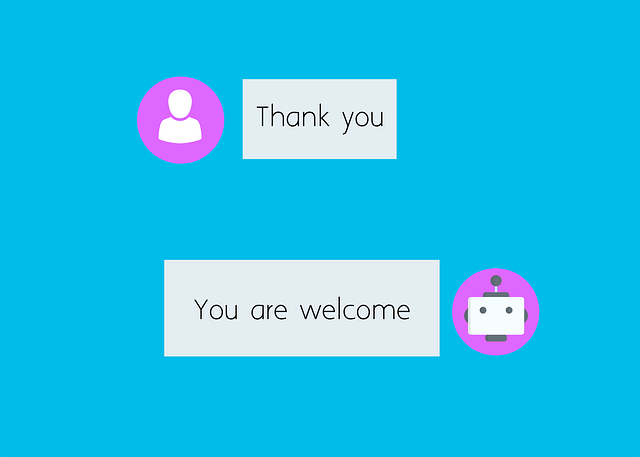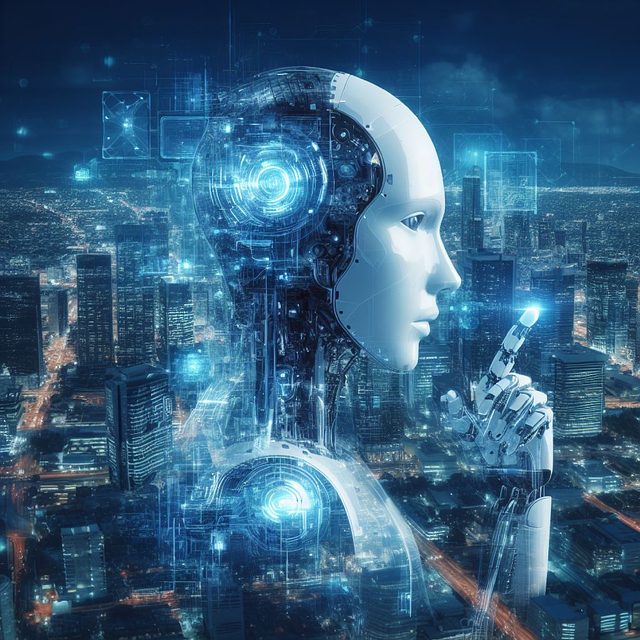The evolution of AI chatbots has been marked by significant advancements in machine learning and natural language processing (NLP), transforming rule-based systems into adaptive, conversational assistants. These AI agents, now integrated into various industries, particularly customer service, offer 24/7 support, faster response times, and personalized experiences. Companion AI, a new frontier, sees chatbots engaging in complex dialogues, providing empathy, learning from user behavior, and adapting to individual needs. While this rapid progress brings ethical challenges, like privacy concerns and bias mitigation, the future looks bright with predictions of more human-like assistants revolutionizing customer service, mental health support, and beyond.
The evolutionary journey of AI assistants and companions has spanned decades, from rudimentary rule-based chatbots to sophisticated, conversational intelligences. This article delves into the genesis of AI chatbots, their evolution into versatile assistants, and their growing role in AI customer service. We explore the rise of companion AI, examining both opportunities and challenges, and look ahead to future trends and implications. Discover how these technologies are reshaping our interactions with machines, offering not just support but companionship.
- The Genesis of AI Chatbots: Early Beginnings and Prototypes
- Evolution to AI Assistants: From Rule-Based to Conversational
- AI in Customer Service: Transforming Support with Intelligent Agents
- Rise of Companion AI: Filling the Gap Between Machine and Human
- Challenges and Ethical Considerations: Navigating a Complex Landscape
- The Future of AI Companions: Trends, Possibilities, and Implications
The Genesis of AI Chatbots: Early Beginnings and Prototypes

The Genesis of AI Chatbots traces back to the early days of artificial intelligence research, where pioneers began exploring machine learning and natural language processing capabilities. These initial efforts laid the foundation for what would eventually become sophisticated AI chatbots we interact with today. Early prototypes focused on rule-based systems that could answer simple questions or perform specific tasks.
These primitive AI assistants were often confined to academic settings or research labs, serving as tools for demonstrating the potential of computer science. Over time, advancements in machine learning algorithms and the availability of vast datasets accelerated the evolution of AI chatbots. The shift from rule-based systems to more adaptive models marked a turning point, enabling these digital companions to engage in more natural and contextually relevant conversations with users, revolutionizing customer service and paving the way for broader applications of AI in various industries.
Evolution to AI Assistants: From Rule-Based to Conversational

The evolution of AI assistants has been a remarkable journey from rule-based systems to the conversational AI chatbots we interact with today. Initially, early AI assistants followed strict rules and protocols, designed to automate specific tasks or provide pre-programmed responses. These systems were limited in their ability to understand natural language and context, making human-machine interaction clunky and often frustrating.
Over time, advancements in machine learning and natural language processing revolutionized the field. AI assistants began to learn from user interactions, adapting to individual preferences and contexts. This shift enabled more fluid conversations, better understanding of user needs, and the ability to handle a broader range of tasks, including customer service inquiries. Today’s AI chatbots can engage in complex dialogues, providing personalized assistance and enhancing the overall user experience.
AI in Customer Service: Transforming Support with Intelligent Agents

The integration of AI in customer service has revolutionized support interactions, paving the way for more efficient and intelligent assistance. AI chatbots and assistants are now adept at handling a multitude of tasks, from answering basic queries to resolving complex issues. These agents leverage natural language processing (NLP) and machine learning algorithms to understand and respond to customer needs with remarkable accuracy.
By deploying AI in customer service, businesses can offer 24/7 support, reduce response times, and free up human agents to tackle more nuanced problems. Moreover, AI assistants can personalize interactions based on user data, providing tailored solutions and enhancing the overall customer experience. This evolution in AI customer service marks a significant shift towards more proactive, intuitive, and human-like support systems.
Rise of Companion AI: Filling the Gap Between Machine and Human

The evolution of artificial intelligence (AI) has witnessed a significant shift towards companionable and assistive roles, marking a notable rise in Companion AI. Traditionally, AI chatbots and assistants were perceived as mere tools for information retrieval or basic task automation. However, advancements in natural language processing and machine learning have paved the way for more sophisticated AI entities capable of engaging in complex conversations and providing personalized support.
Today, AI companions are increasingly being integrated into various aspects of human life, from customer service interactions to personal wellness coaching. These AI assistants fill a gap between traditional machines and humans by offering empathy, understanding, and adaptive learning capabilities. They can process vast amounts of data, learn from user behavior, and provide tailored responses, thereby enhancing the overall user experience and fostering deeper connections.
Challenges and Ethical Considerations: Navigating a Complex Landscape

The evolution of AI chatbots and assistants has been remarkable, yet navigating their complex landscape brings a unique set of challenges and ethical considerations. As these intelligent systems integrate deeper into our daily lives, from customer service interactions to personal companionship, several factors demand careful attention. One primary concern is ensuring transparency and user awareness about the capabilities and limitations of AI. Users should clearly understand when they are interacting with an AI chatbot versus a human agent, especially in customer service scenarios, to avoid potential misunderstandings or deception.
Additionally, privacy and data security are paramount. AI assistants often require access to sensitive personal information to deliver tailored responses and services. Developers must implement robust measures to protect user data from breaches or misuse, maintaining the utmost confidentiality. Bias in AI training data is another critical issue, as it can lead to discriminatory outcomes and reinforce societal biases. Ethical guidelines and diverse datasets are essential to mitigate these risks, ensuring that AI assistants serve all users equitably.
The Future of AI Companions: Trends, Possibilities, and Implications

The future of AI companions is an exciting prospect filled with immense potential. As technology advances, AI chatbots and assistants are set to become more sophisticated, offering personalized experiences tailored to individual users’ needs. With continuous advancements in natural language processing (NLP), these virtual beings will understand and interpret human emotions and nuances better, fostering deeper connections. This evolution may lead to them taking on diverse roles, from enhancing customer service through AI-driven interactions to providing mental health support as compassionate companions.
Trends suggest a move towards more human-like AI assistants with advanced conversational abilities, capable of engaging in complex discussions and multitasking. The integration of artificial intelligence into various sectors will further revolutionize customer service, making it more efficient and accessible. However, ethical considerations and privacy concerns remain paramount. As AI companions become more integrated into daily life, ensuring transparency, data security, and user consent will be crucial to building trust and shaping a positive future for this technology.
